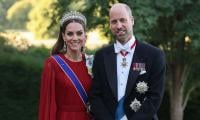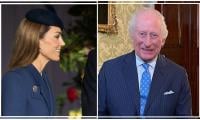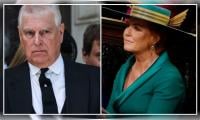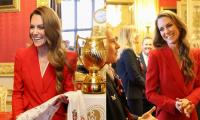A thoughtful book on Iqbal’s poetic intellect
The book Allama Iqbal Ki Urdu Ghazal Kay Kirdar by Dr. Anwar-ul-Haq bears testimony to the genius of a great poet.
Ghazal’s traditional symbols are very different from the ones used by Iqbal. In his ghazals, Iqbal used symbols that were potent and powerful in a fittingly exceptional style and creative fruitful manner. Their use in poetry was no doubt a classical tradition of Urdu poetry, but Iqbal employed them most dexterously for projecting the diversity of caliber among the Indian Muslims. Iqbal had a special objective in mind for whose realization he used the medium of ghazal. The Indian Muslims were living in deep slumber and lethargy. Caught between the two extremes: the gloom and doom of slavery and the absence of light for visionary thought and action, they were unaware of their potential. Allama Mohammad Iqbal, who possessed a real talent to unravel the sub-continental socio-political and communal problems, identified novel symbols to speak to the Indian Muslims, in an intellectual manner.
He expected the Muslim youth to look forward and high. He presented the examples of heroes of Islam likes Tariq and Sultan Tipu as they were courageous and brave. When he asks the youth to become a Shaheen, he means the inculcation of lofty ideals. He is invariably an advocate of the cultivation of strength and deprecates weakness.
Symbols in Iqbal’s ghazals present images of the glorious achievements of Muslims in the past, their subsequent downfall, and the recipe for reconstruction. In order to regain the past glory, Iqbal’s ghazals retain the fire and inspiration. The symbols used in Iqbal’s poetry are superb.
Iqbal infuses spiritual enlightenment in the use of symbols. He uses most dexterously the names of prophets, saints, and Sufis. Adam, Ibraham, Ismael, Musa, Jesus, Hazrat Muhammad (PBUH), Umar Farooq, Hazrat Ali, Imam Husain, Junaid Baghdadi, Bayazi Bastami, Faridudin Attar, and other religious figures in his ghazals. These symbols help the readers to tune themselves for the high and refined role. Even mentioning the names of Rumi, Hafez, Dante, Goethe, Emerson, Tagore inspires.
He determines the role and responsibility of man in general and Muslims in particular. For instance, Iqbal says, “The active life with all its ups and downs is better than a stagnant one. Even a dove can become an eagle when it makes desperate efforts to get out of the trap.”
The book has five chapters: Chapter-I is devoted to the introductory discussions. Chapter-II explores the familiar symbols in ghazal from the Dakani period to the Iqbal era. Chapter-III presents research on symbols in Iqbal’s ghazals. Chapter- IV presents the critical review of symbols in Iqbal‘s ghazals. Chapter-V details diverse symbols in Iqbal’s ghazal. Dr. Anwar-ul-Haq built his research work on reliable material gathered from original sources that add to the beauty hidden in Iqbal’s ghazals.
-
 HBO Mulls Major 'Game Of Thrones' Spin-off Focusing On A Stark
HBO Mulls Major 'Game Of Thrones' Spin-off Focusing On A Stark -
 Ashton Kutcher Says He's Proud Of Demi Moore
Ashton Kutcher Says He's Proud Of Demi Moore -
 Why Prince William, Kate Hired A Crisis Expert Despite Royal 'calm'?
Why Prince William, Kate Hired A Crisis Expert Despite Royal 'calm'? -
 Extent Of Meghan Markle’s Fears Gets The Spotlight: ‘The Press Detest Her Which Is A Problem’
Extent Of Meghan Markle’s Fears Gets The Spotlight: ‘The Press Detest Her Which Is A Problem’ -
 Caitlyn Jenner Finally Reacts To Kylie, Timothee Chalamet Relationship
Caitlyn Jenner Finally Reacts To Kylie, Timothee Chalamet Relationship -
 Prince William’s Beefed Up PR All Set To Fight Off ‘plot’ And ‘it Might Not Be Long’
Prince William’s Beefed Up PR All Set To Fight Off ‘plot’ And ‘it Might Not Be Long’ -
 Kate Middleton Ups A New Role Unofficially For King Charles As William Prepares His Coronation
Kate Middleton Ups A New Role Unofficially For King Charles As William Prepares His Coronation -
 Teyana Taylor Says She Misread Leonardo DiCaprio Globes Moment
Teyana Taylor Says She Misread Leonardo DiCaprio Globes Moment -
 A$AP Rocky Reveals What Encouraged Him To Date Rihanna
A$AP Rocky Reveals What Encouraged Him To Date Rihanna -
 Newborns At Risk: Health Experts Warn Your Baby Could Already Have Diabetes
Newborns At Risk: Health Experts Warn Your Baby Could Already Have Diabetes -
 Sarah Ferguson Updates Her Plans Now That Andrew’s Eviction Is Nine Days Away
Sarah Ferguson Updates Her Plans Now That Andrew’s Eviction Is Nine Days Away -
 Hailey Bieber Sends Cease And Desist To TikToker
Hailey Bieber Sends Cease And Desist To TikToker -
 Kate Middleton Celebrates England Women's Rugby Stars After World Cup Win
Kate Middleton Celebrates England Women's Rugby Stars After World Cup Win -
 Kris Jenner Dubs Chicago West Her 'sweet Angel' As She Turns Eight
Kris Jenner Dubs Chicago West Her 'sweet Angel' As She Turns Eight -
 Josh Charles Credits Taylor Swift For His, Ethan Hawke’s Moon Person Trophies
Josh Charles Credits Taylor Swift For His, Ethan Hawke’s Moon Person Trophies -
 Jodie Foster Voices Opinion About 'misogyny'
Jodie Foster Voices Opinion About 'misogyny'



